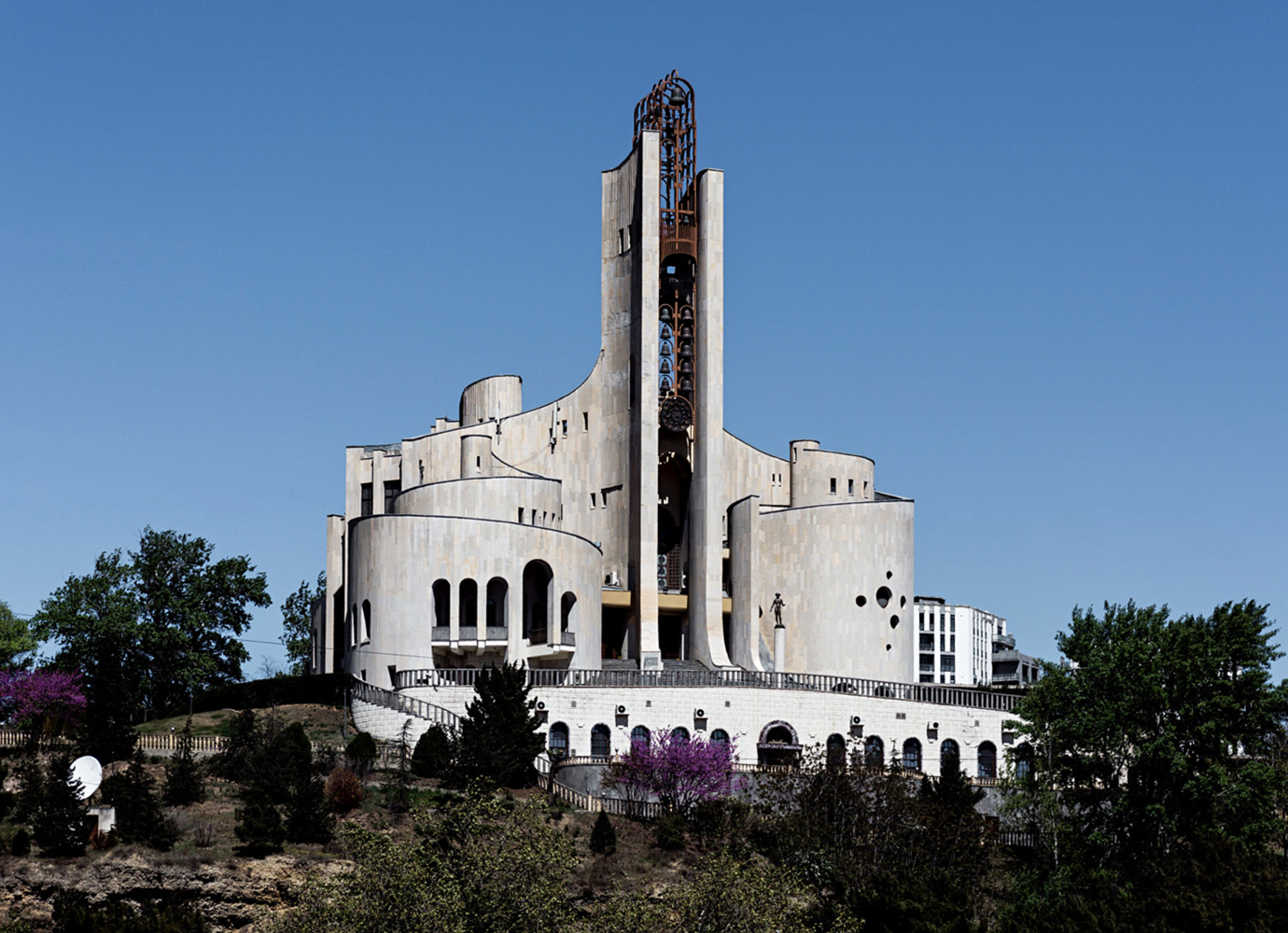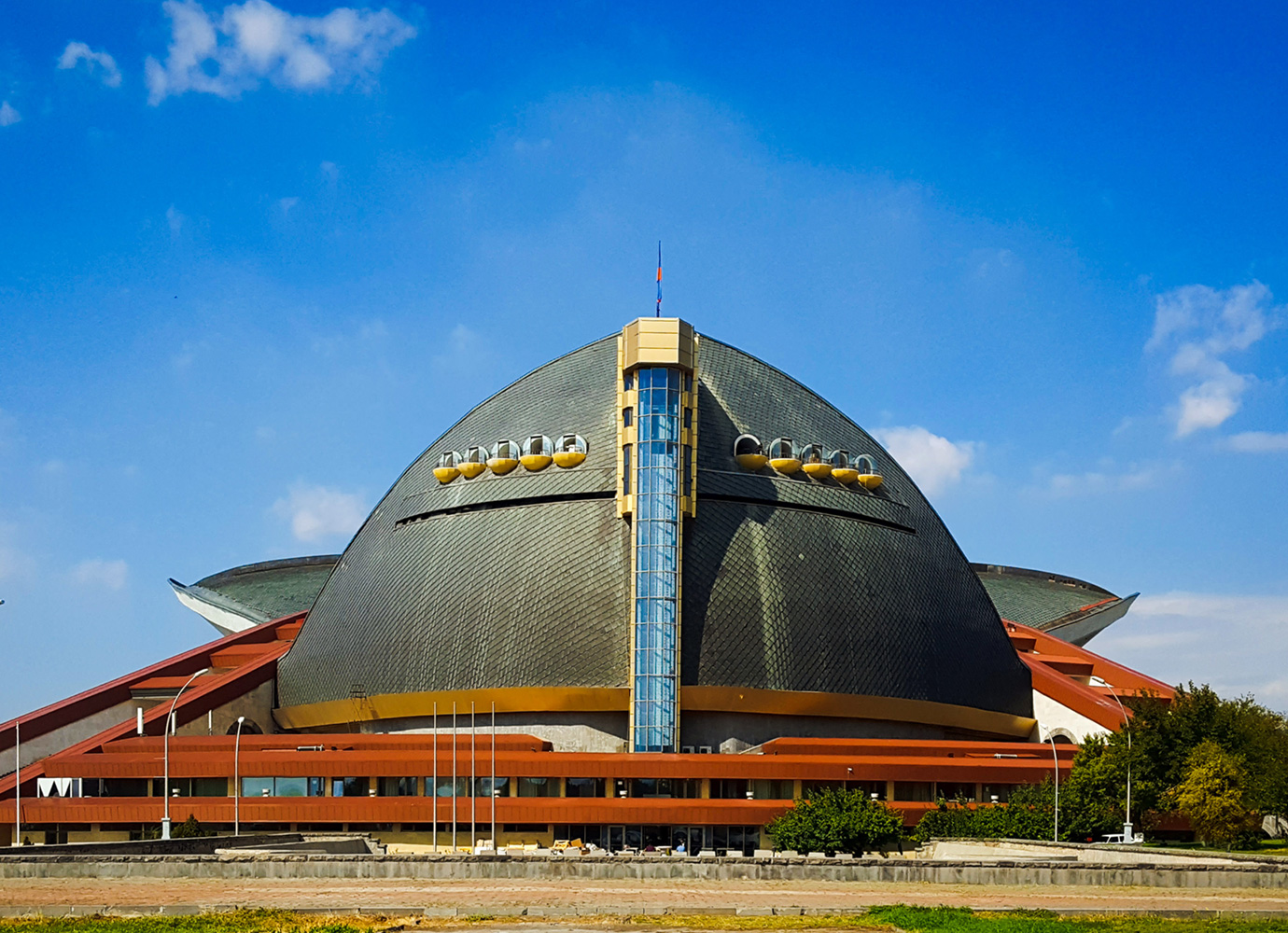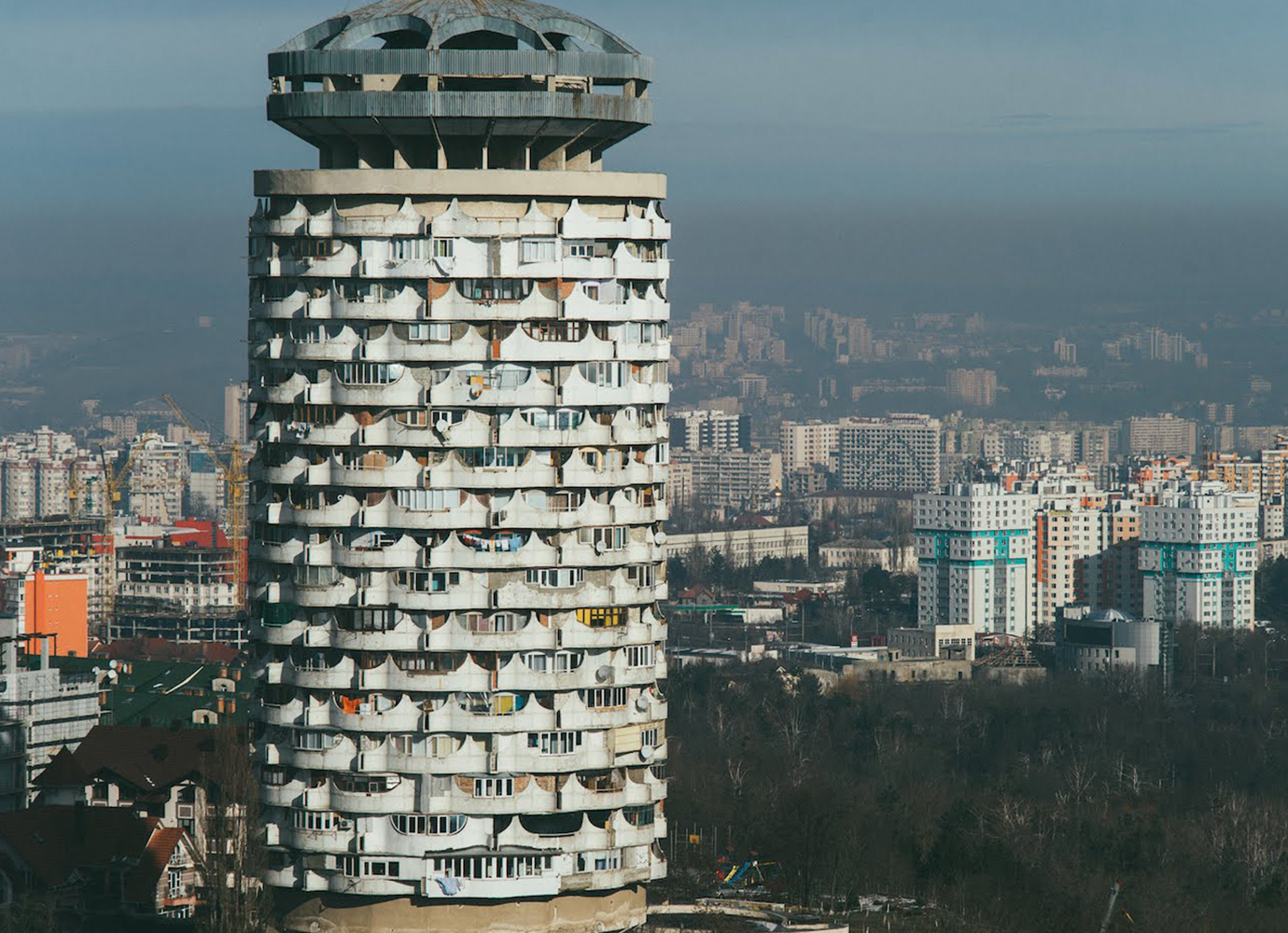Eastern Bloc architecture: sci-fi cinemas | part 10
Eastern Bloc Architecture
This article is from our series Eastern Bloc Architecture: 50 Buildings that Defined an Era, a joint project between The Calvert Journal and Arch Daily
Rossiya Theatre (1961)
Y.N. Sheverdyaev, D.S. Solopov, E. Hadkinsky. Moscow, Russia
Monumental and imposing, the Rossiya Theatre was the largest cinema hall in Russia and Europe when it was constructed in 1961. The cinema was originally built to host the Moscow International Film Festival and to astound moviegoers from the Soviet Union and beyond. Its best-known features were its luminous glass walls and concrete staircase adorned with red carpets, on which many Soviet cinema icons walked.
After the collapse of the USSR, the Rossiya Theatre fell into disrepair. In 1997, it was bought by the Russian film company KARO Film, and renamed the Pushkinsky cinema in honour of the square in which it stands. Following an open call by architecture firm DuPont in 2011, designers and architects presented a myriad of futuristic designs to change the cinema’s cladding. For now, however, no restoration works have been carried out, and the former Rossiya Theatre, although still operating, stands as barely a shadow of its past self.
Cinema Oktyabr. Image: Stefano Perego
Cinema Oktyabr (1975)
Valentin Malyshev. Minsk, Belarus
Crowned by a bright-red sign with its name — “October”, in English — the Oktyabr Cinema embodies Soviet architecture in Minsk. Named after acclaimed director Sergei Eisenstein’s 1928 film about the October Revolution, Oktyabr was built in 1975 as a place for citizens to gather and celebrate the Soviet cinema industry.
Characterised by its clamshell dome, the Oktyabr stands atop a rectangular ground floor now taken up by different stores. A robust staircase leads to the esplanade and the main cinema auditorium. Characteristic of the modernist architecture of its time, the building is surrounded by a concrete wall that narrows in at cinema’s front entrance, revealing the glass facade of the building. Although the cinema does not enjoy the popularity it once had, the dozens of tiny lights on the cinema’s roof still give Oktyabr cinema a dream-like appeal at night.
Cinema Rossiya. Image: Stefano Mayno
Cinema Rossiya (1975)
Artur Tarkhanyan, Spartak Khachikyan, Hrachik Poghosyan. Yerevan, Armenia
Completed in 1975, Yerevan’s Cinema Rossiya was once the country’s largest cinema, and today stands as one of Armenia’s greatest monuments to Soviet-era cinematic architecture. The outlandish shape of the building is the work of Spartak Khachikyan, Artur Tarkhanyan, and Hrachik Poghosyan, an architectural trio famous for designing some of the country’s most iconic modernist buildings.
Rossiya’s structure encompasses a sweeping pair of concrete sails that reach out over the streets below, whose design was intended to reflect the lower and higher peaks of the nation’s revered Mount Ararat. Abandoned during the 1990s, it later became home to market traders, and over time was converted into a shopping centre. Following Armenia’s 2018 Velvet Revolution, the Ministry of Culture moved to recognise a series of buildings, including Cinema Rossiya, on the country’s list of protected heritage sites.
Kosmos Cinema. Image: Mikola Slyusar
Kosmos Cinema (1987)
Vasyl Mykytenko. Zhytomyr, Ukraine
Glistening with blue and green hues, Kosmos Cinema treasures a stunning modernist mosaic. Built by architect Vasyl Mykytenko in 1987 in Zhytomyr, a town in western Ukraine, the facade was designed according to a sketch by artist Oleksandr Kostiuk.
In honour of the cinema’s name, the mosaic’s design explores the topic of space exploration. But, whereas most artistic depictions of the theme incorporated symbols of grandeur, Kostiuk’s mosaic instead avoids the representation of humans and tries to convey the infinity of the universe through curved lines and monochrome tones. Now, Kosmos Cinema stands as both a building of great architectural importance, and as a reflection of changing Soviet attitudes towards heroism in the final years of the USSR.
Arman Cinema. Image: Philipp Dipl
Arman Cinema (1968)
Alexander Korzhempo, Innokentiy Slonov. Almaty, Kazakhstan
The story of Arman Cinema is one of risk-taking and success. It was built in 1968 by Alexander Korzhempo, an architect lauded as “the first Almaty modernist”. Rumour has it that, at the time of the cinema’s inauguration, bulldozers stood not far from the cinema in case the city’s public administration were not satisfied with its design. Luckily for the architect and the city’s architectural legacy, the authorities liked the building, which still stands to this day.
While Arman’s rectangular shape and concrete-heavy entrance may not stand out, the monumental bas-reliefs on its side facades are unique. The eastern “Science” facade depicts space motifs, symbolising the grandeur of Soviet scientific advancement. “October”, meanwhile, is shown on the western facade, depicting the glory of the October Revolution and the majesty of the Soviet motherland. Inside, in addition to multiple cinema halls, Arman Cinema boasts an indoor patio with lush greenery and a fountain. Although after the collapse of the USSR it was temporarily repurposed as a nightclub, this masterpiece of Soviet Almaty now functions as a cinema once more.


